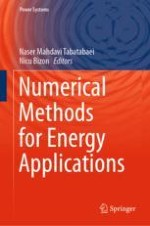2021 | OriginalPaper | Chapter
Power and Energy System Modeling Based on Modified Tellegen Principle
Authors : Milan Stork, Daniel Mayer
Published in: Numerical Methods for Energy Applications
Publisher: Springer International Publishing
Activate our intelligent search to find suitable subject content or patents.
Select sections of text to find matching patents with Artificial Intelligence. powered by
Select sections of text to find additional relevant content using AI-assisted search. powered by
